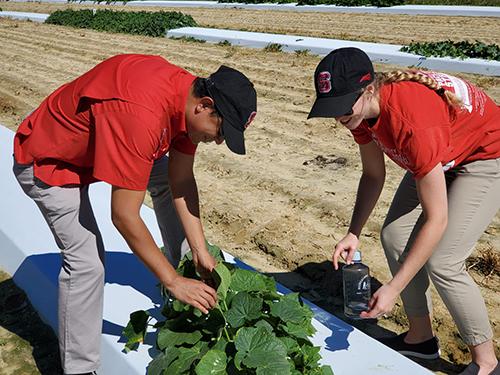USA
October 21, 2020

Scientists in the field looking at Cucurbit Downy Mildew - Credit: Andres Salcedo, Mary Hausbeck, Stacey Pigg, and Lina M. Quesada-Ocampo
Cucurbit downy mildew is a devastating disease affecting economically important crops such as cucumber, cantaloupe, squash, pumpkins, and watermelon. Previously effective fungicide have been failing in the United States and Europe, making accurate and early diagnosis critical for timely disease management.
As the disease is rapid, infectious, and hard-to-diagnose, a team of plant pathologists with North Carolina State University and Michigan State University put together a clear and summarized guide to cucurbit downy mildew for beginners and experts. Accorded to Andres Salcedo, "We realized the necessity to compile relevant and concise information about the causal agent of cucurbit downy mildew and developed a guide of multiple alternatives for its diagnosis and handling."
As cucurbit downy mildew is caused by Pseudoperonospora cubensis, an obligate pathogen that cannot be cultured using standard microbiological methods, this guide provides well-documented written and graphic material to help with diagnosis based on symptoms and the presence of the pathogen in the plant. The guide also covers diagnosis methods based on DNA testing and microscopy as well as methodologies for isolation, damage evaluation, multiplication, and storage under laboratory conditions.
The ability to quickly identify cucurbit downy mildew is crucial for cost-effective chemical or cultural control strategies. To help those who are trying to assess the efficacy of new disease management products, this guide also provides protocols for pathogen handling and evaluation. Parts of the guide are also being used to develop extension training videos to further inform a broader audience about cucurbit downy mildew.
To see the guide for yourself, read "Diagnostic Guide for Cucurbit Downy Mildew" published in Plant Health Progress.